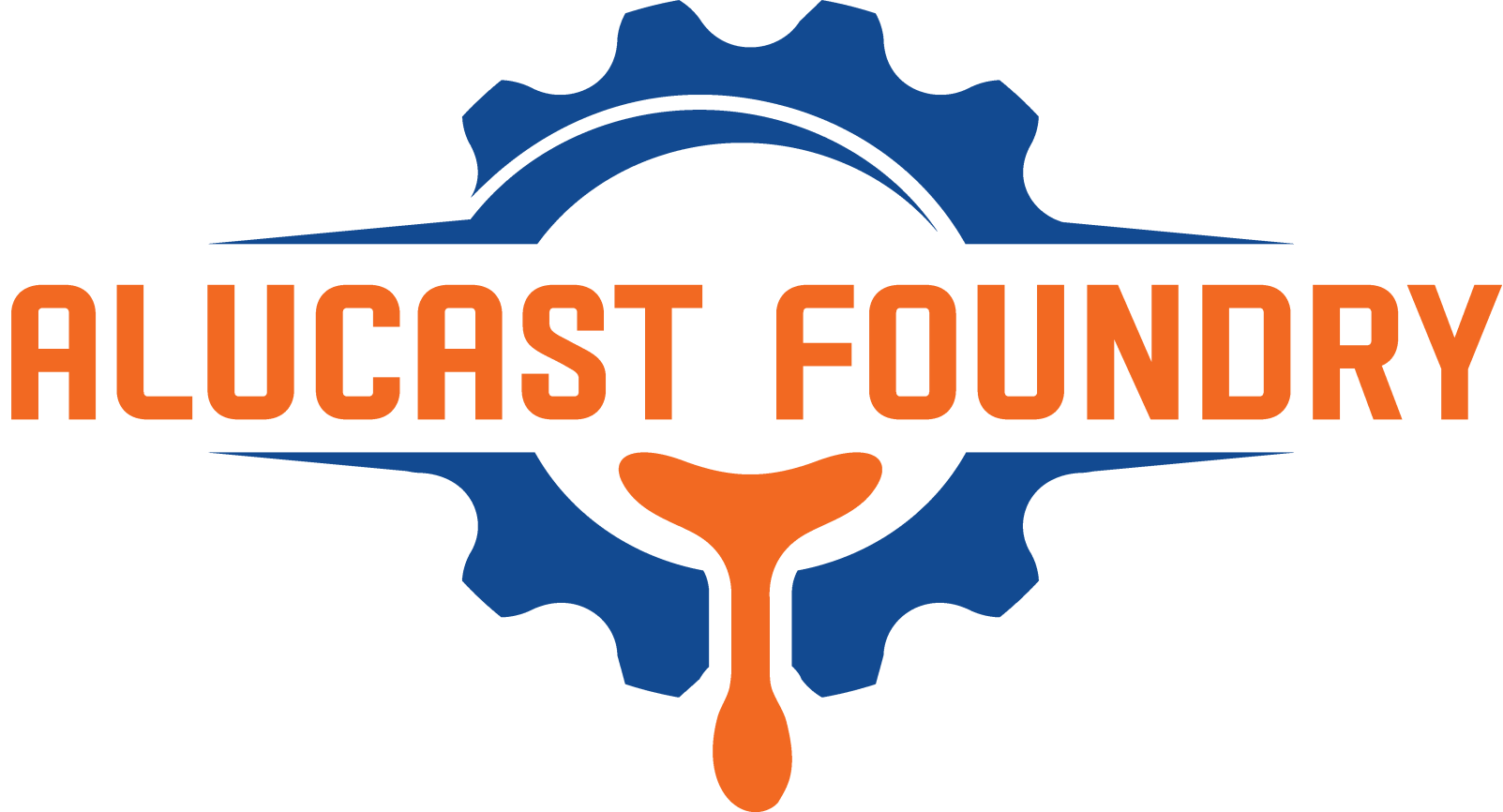Machining & Painting
Best Machining & Painting for Aluminum Casting in Coimbatore
Machining for Aluminum Die Casting Parts
Machining is a crucial process in aluminum die casting to achieve precise dimensions, tight tolerances, and smooth surface finishes. After casting, parts often require CNC machining, milling, drilling, tapping, or turning to remove excess material and refine critical features. Since aluminum is lightweight and has excellent machinability, it allows for high-speed cutting with minimal tool wear. The machining process ensures accurate fits, improves functionality, and meets design specifications for industries like automotive, aerospace, and electronics. Coolants and lubricants are often used to prevent overheating and improve tool life. Advanced CNC machines enable complex geometries and automated operations, enhancing production efficiency. Post-machining inspections, such as CMM (Coordinate Measuring Machine) checks, ensure high precision and quality control. Machined aluminum die cast parts are widely used in structural components, engine housings, and electronic enclosures. This process adds value to die-cast aluminum parts, making them suitable for high-performance applications.
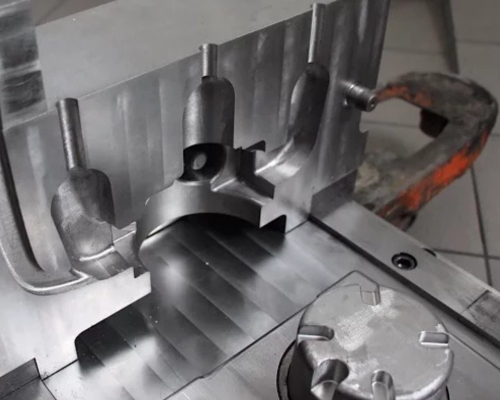
Painting Cast Aluminum:
Painting Cast Aluminum enhances its appearance, corrosion resistance, and durability by applying protective coatings. Proper surface preparation, including cleaning, degreasing, and priming, is essential for long-lasting adhesion and finish quality.
Why Do Painting on Cast Aluminum?
Painting cast aluminum improves corrosion resistance, enhances aesthetics, and provides a protective barrier against environmental factors. It also increases durability and allows for color customization based on application needs.
Painting Cast Aluminum Process:
Cleaning the Surface:
Cleaning the surface of cast aluminum involves removing dirt, grease, and oxidation using degreasers, solvents, or abrasive blasting. This step ensures proper paint adhesion and a smooth, long-lasting finish.
Applying the Primer:
Applying primer on cast aluminum creates a strong bonding layer between the metal and paint, preventing corrosion and improving adhesion. A self-etching or epoxy primer is commonly used for the best results.
Resources
Infrastructures
MELTING FURNACE
We have two furnaces that can both melt and hold aluminum for casting. One furnace has a capacity of 250 kilograms, while the other can hold 350 kilograms. These furnaces help in maintaining a steady supply of molten aluminum for production. The melting process ensures that the aluminum reaches the right temperature for casting. Once melted, the metal stays in the furnace at a controlled temperature. This prevents it from cooling down too quickly before being poured into molds. The furnaces improve efficiency by reducing the need for frequent reheating. With these, we can produce high-quality aluminum castings consistently.
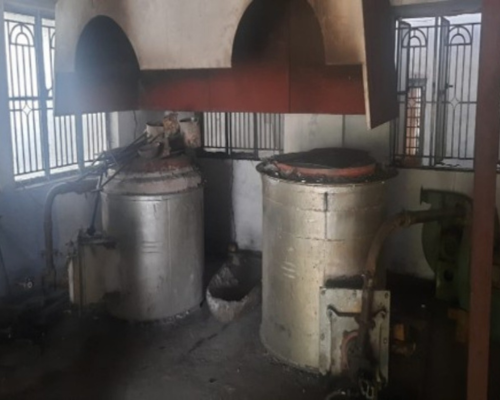
CASTING POURING AREA
The casting pouring area in Alucast Foundry is a critical zone where molten aluminum is carefully transferred into pre-heated molds to form high-quality gravity die cast components. This area is designed to maintain strict temperature control to ensure uniform filling of the die cavity, minimizing defects like porosity and cold shuts. Operators follow precise pouring techniques to achieve consistent metal flow, reducing turbulence and ensuring optimal material properties. Safety is a top priority, with protective gear and controlled environments to prevent accidents from molten metal handling. The pouring ladles are regularly maintained to avoid contamination and ensure smooth pouring operations.
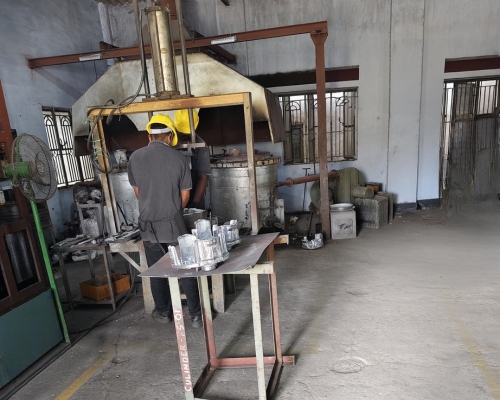
CUTTING AREA
The cutting area is equipped with a large bandsaw cutting machine, capable of cutting castings up to 2.5 feet in width. This high-capacity machine ensures precise and efficient cutting, minimizing material waste and improving productivity. It is designed to handle heavy-duty aluminum castings with smooth and accurate separation of excess material. The robust blade system allows for consistent performance, reducing manual labor and improving workflow. Safety features such as operator shielding and controlled cutting speed ensure a secure working environment. This cutting setup plays a vital role in preparing castings for further machining and finishing processes.
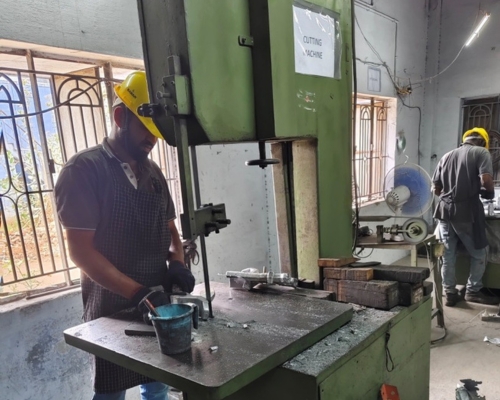
FETTLING AREA
The fettling area is equipped with a belt grinding machine and multiple angle grinders for efficient casting fettling. The belt grinding machine ensures smooth surface finishing by removing excess material and sharp edges from the castings. Angle grinders provide flexibility for detailed fettling, allowing operators to reach complex areas with precision. These machines help improve productivity by reducing manual effort and enhancing the quality of finished components. Safety measures, including protective gear and dust extraction systems, ensure a secure working environment. This setup plays a crucial role in refining cast components before further processing.
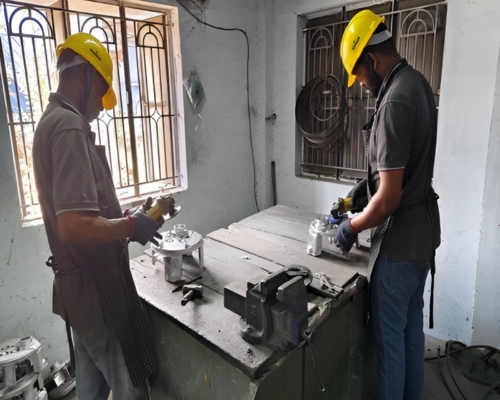
Get Quote
Address
346/1a, Gandhi Nagar, Irugur post, Coimbatore – 641103
Call Us
+91 73732 06622
Email Us
sales@alucastfoundry.com
